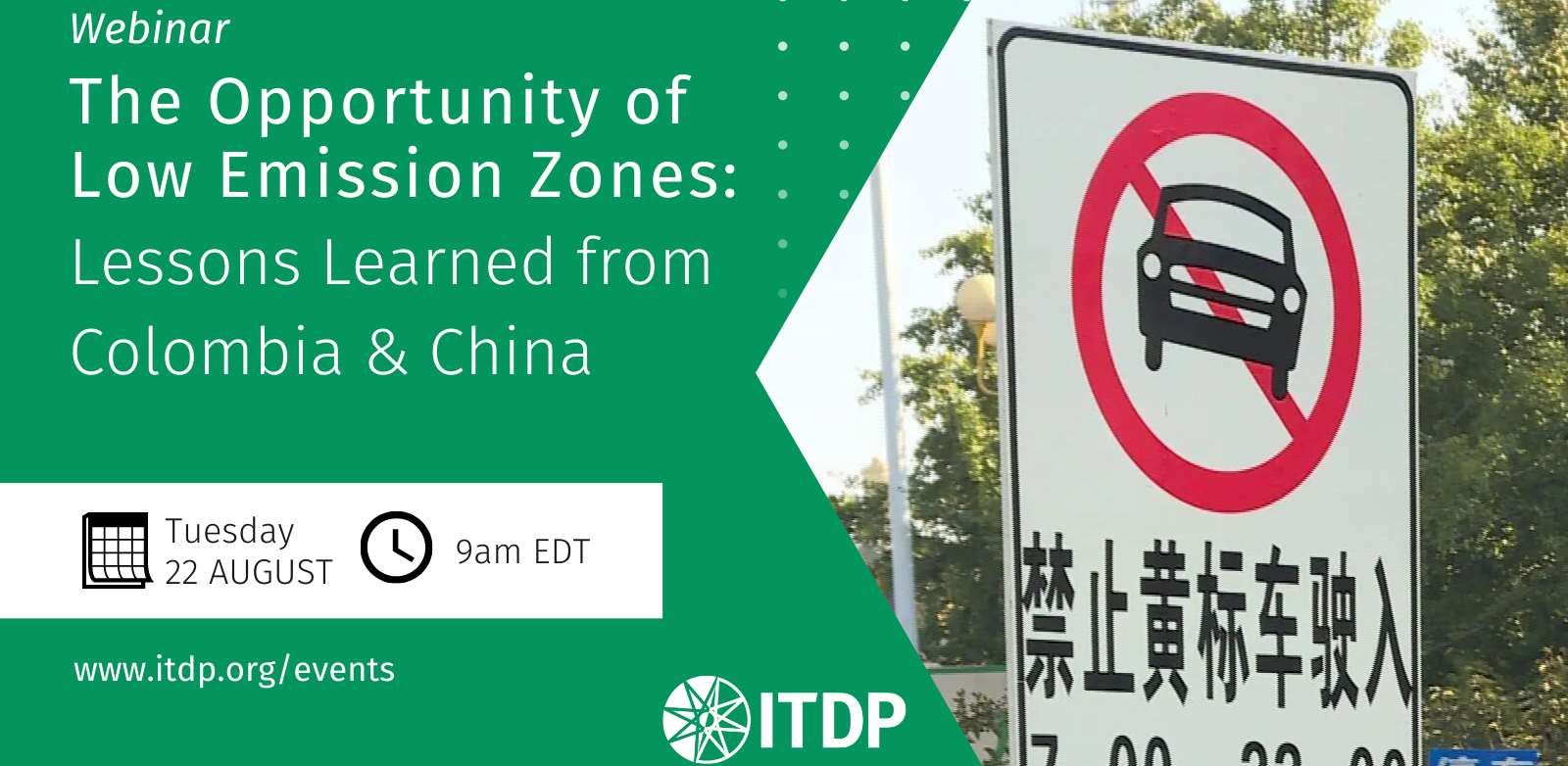The Opportunity of Low Emission Zones (LEZs): Lessons Learned from Colombia and China — Webinar

With the transport sector accounting for nearly 12 billion metric tons of greenhouse gas emissions, there needs to be a concerted effort to mitigate the impacts of emissions from road and passenger transport. In cities experiencing rapid urbanization especially, there is an urgent need to shift away from both private cars and transition to electric vehicles to tackle climate change, improve air quality, and reduce traffic injuries.
Mitigating the impacts of transport in the climate crisis requires bold, comprehensive solutions that:
● Reduce the demand for driving and the negative outcomes associated with vehicle use;
● Encourage a transition to electric vehicles and electric public transport;
● Promote sustainable and active forms of mobility, like walking and cycling.
Low Emission Zones (LEZs) are a strategy that cities are using more and more, in addition to Traffic Demand Management (TDM), to help address issues like congestion, air quality, and road safety. ITDP’s recently launched The Opportunity of Low Emission Zones report, stemming from our previous Taming Traffic paper, provides an important framework for cities as they consider implementing LEZs and related strategies.
LEZs are an important policy tool for cities to consider as they work to achieve this transformation. Though LEZs have been primarily implemented as an air quality improvement strategy, they also have the potential to catalyze a faster transition to electric vehicles and to encourage more compact city planning that facilitates walking, cycling, and public transport ridership.
This webinar aims to inspire cities to develop healthier urban spaces through LEZs and TDM tactics that promote sustainability, active mobility, and equity. It discusses good practices around promoting LEZs, as well as identifies possible problems that municipalities may face in implementation, and offers solutions presented by cities like Medellin, Colombia, and Beijing and Jinan, China.
ITDP will soon be releasing the Portuguese translation of the report in addition to a translation in Chinese. This webinar recording includes live interpretations in Spanish and Portuguese.